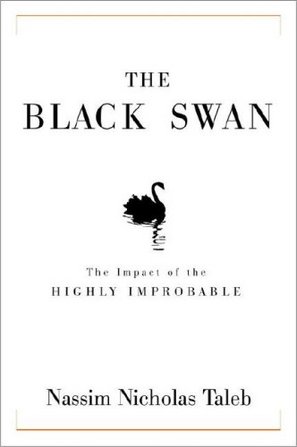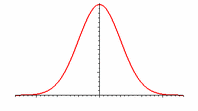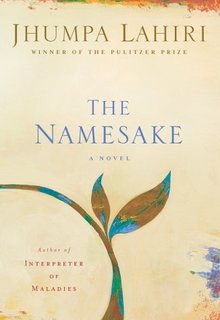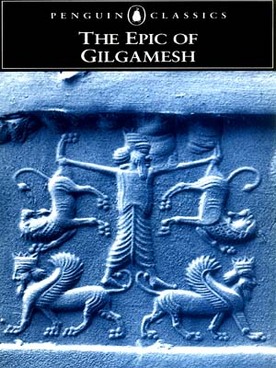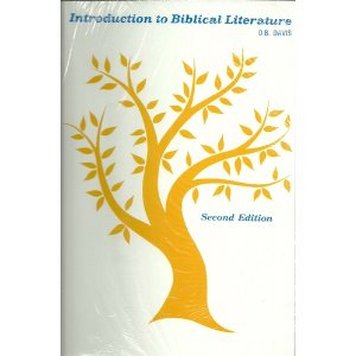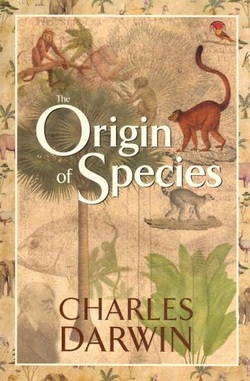This book by Nassim Nicholas Taleb talks about what is known as The Black Swan theory. The story or origin of how this theory came to be is quite ironic. The idea of the black swan refers to the fact that prior to the discovery of Australia, it was assumed that all swans were white. No one had really seen a black swan, however it was later discovered that they do exist. This randomness and improbability of seeing a black swan when white ones are much more common, makes a black swan the perfect animal to associate the theory with. The actual theory itself deals with the probability of certain events happening, those that are common over those that are rare. This probability is expressed in a bell curve diagram (see below diagram). Both the tail ends of the curve represent the biggest disasters (earthquakes, 2012, etc), where as the middle represents the most common, least severe occurrences. In this book, Taleb talks about his opinion on how we live our daily lives as if the middle of the bell curve is the only thing that exists. He discusses how we need to be prepared for these "tail end" events and how they may be unlikely but they definitely can happen.
The way we connected this book to origins is that The Black Swan theory explains one way of looking at or analyzing the origin of randomness and events that we can't predict. We also really like how he not only puts forth this chart for reference in his book, but Taleb also expresses his opinion on how are society has been living in such denial of the ride range of possible events, and how we must change.
The book, Change of Heart, by Jodi Picoult tells the story of a death row inmate, Shay Bourne, an uneducated man who’s been convicted of a double homicide. In order to redeem himself, he decides that he must donate his heart, post-execution, to the sister of his victim, a little girl who needs a heart transplant in order to survive. In order for Bourne to donate his heart to this sick child, he would have to be hung, instead of killed by lethal injection like the state of New Hampshire (in the story) requires. Throughout the story, the reader is left with minimal understanding as to why Bourne committed the crimes in the first place, making the book all the more mysterious and enticing. As Bourne's life in jail unravels, and his requests to donate his heart for the transplant become increasingly public, the prison takes action to control the media by calling in a priest to talk some sense into Bourne about true redemption. However, after the first few visits with the inmate, the priest finds that although Bourne has few religious beliefs, he begins to perform miracles that coincide with a real, ancient gospel that was rejected as heresy by the Church, and excluded from the Bible. Instead of talking to Bourne, the priest listens to what he has to say, and begins to question his own views about religion and the things he had been taught throughout his entire life.
This book brings up two main themes: religion and death penalty.
When the priest was called in by the prison to talk to the inmate, he brought with him his years of Bible study and his devotion to god. Moreover, he came with the mindset that his beliefs were superior to all others'. When Bourne began performing miracles that were verbatim from a real gospel that was excluded from the Bible for heresy, the priest questions whether his beliefs actually were superior to all others' and whether those beliefs have positively negatively guided him through his life. In doing so, he takes into account how origins have affected his life compared to how origins have affected the inmate's life and why their lives have mapped out so differently.
At many points throughout the story, the reader is forced to question whether or not the death penalty is a just punishment, no matter how inhumane the crime may be. We know that killing an innocent man is wrong, but what about killing a guilty one? In this book, Jodi Picoult takes the readers inside the world of punishment, showing us what the death penalty's purpose is and why, in many states, it is no longer legal. In doing so, we get a sense of why the death penalty originated in the first place.
When the priest was called in by the prison to talk to the inmate, he brought with him his years of Bible study and his devotion to god. Moreover, he came with the mindset that his beliefs were superior to all others'. When Bourne began performing miracles that were verbatim from a real gospel that was excluded from the Bible for heresy, the priest questions whether his beliefs actually were superior to all others' and whether those beliefs have positively negatively guided him through his life. In doing so, he takes into account how origins have affected his life compared to how origins have affected the inmate's life and why their lives have mapped out so differently.
At many points throughout the story, the reader is forced to question whether or not the death penalty is a just punishment, no matter how inhumane the crime may be. We know that killing an innocent man is wrong, but what about killing a guilty one? In this book, Jodi Picoult takes the readers inside the world of punishment, showing us what the death penalty's purpose is and why, in many states, it is no longer legal. In doing so, we get a sense of why the death penalty originated in the first place.
The book, The Namesake, by Jhumpa Lahiri tells of the struggle that immigrant families face when moving to the United States in terms of adapting to a new culture, language, and maintaining their old customs and beliefs. The novel begins with Ashoke and Ashima Ganguli, two newlyweds about to deliver their first child in a hospital in Massachusetts, where they had recently moved to from Calcutta, India. When the couple happily prepares to leave the hospital with their baby boy, they learn that they can't leave until they give their son a legal name, a Bengali custom traditionally given to an elder in the community. It is then when they choose the name Gogol for two important reasons, which we see help carry out the plot of this book.
As Gogol grows up, he struggles with being a first generation American and finds himself torn between many Bengali customs and American customs, thus sometimes disappointing his parents along the way. When Gogol legally changes his name shortly before leaving for college, his parents find themselves questioning their motives for moving to the United States in the first place and feel isolated in a community that they did not grow up in, a pain that many other immigrants feel too. One summer, when Gogol comes home from college, his father finally explains to him the origins of his name. It is then that Gogol finally learns to accept his name. As the book comes to an end, we see happy and tragic events guide Gogol to a better understanding of his origins.
Siddhartha written by Herman Hesse tells the story of a young boy, Siddhartha, who is trying to find the best possible way to relieve or eliminate the inner self. The inner self would be defined as the desires and selfish cravings we have for luxuries. He begins his journey by leaving his father and living among a group known as the Semanas, who live in the forrest in very unusual conditions, along with his best friend who pretty much lived by Siddhartha's footsteps, Govinda. Everyday he would go through the same meditation process of trying to relieve this spirit that was extremely looked down upon by himself and his people. Siddhartha eventually comes to the conclusion to leave the Semanas after he felt the inner self kept returning when he was not in meditation. He then leaves the Semanas and decides to travel alone and find his own path as to how to get rid of his desires. The two friends go on their journey together practically attached at the hip until Govinda decides to follow the path of the Buddha, a teacher of religion with his own set of beliefs. Siddhartha, now alone still attempts to find the way to relieve himself of desire with the help of some people he meets along the way.
Siddhartha supports an important statement one may argue which is that our original idea of ourselves changes as we encounter new people who teach us who we really are. In other words each one of the people he meets influences him and helps him form into someone slightly or extremely different from how he originated. For example, even though he left the Semanas because he felt the meditating wan't effective he still learned how to be very patient and how to survive in the wild for when he would be on his own. After trying to make it on his own by taking his own path, he realizes he can't make it alone and goes on to learn from multiple teachers. Each one of the people he came across, such as the Buddha, helped him figure out what best fit him and what he truly believed in. With this all in mind, it is very possible that had Siddhartha decided to follow the Buddha or anyone else for that matter that he may have been even more successful. Going back even further, had he never left his father and allowed him to teach him the ways of meditation he may have been happier. Although we don't know and can only predict which path of choice would provide the best outcome, we do know for sure that Siddhartha evolved from his origins based on the experiences he had and the people he met.
The Epic of Gilgamesh is an epic poem from Mesopotamia and it is among one of the most ancient pieces of literature. Because of its age, it is unknown who wrote this epic, and it is credited today to the various Mesopotamian cultures, including the Sumerians, Akkadians, Babylonians, and Assyrians. This epic follows the story of King Gilgamesh of Uruk and the friendship bond that he establishes with Enkidu. Together, Gilgamesh, who is half god, and Enkidu, who is half animal, take on dangerous quests in order to ultimately conquer death. However, throughout these quests, the two opposite creatures, Gilgamesh and Enkidu, learn from each other and are able to "become human" together. In the end, Enkidu is killed in their last battle against 'death'.
One of the major connections that this book has with origins is that it is one of the first pieces of literature. Remarkably enough, it deals with topics that are widely important today, such as friendship and death. Gilgamesh, the protagonist, entered the epic as a cruel king, oppressing his people and conducting in inappropiate behavior. Perhaps this was because he had no values to keep him from acting in such a brutal manner. Enkidu was introduced as an oblivious man, for he wasn't truly a man yet. He knew nothing of the human life because lived with the animals. However, throughout the epic, the two became new people. From Enkidu, Gilgamesh learned about death and how to cope with losing a loved one. Before he formed a relationship with Enkidu, Gilgamesh had never been close enough to anyone to open up to. From Gilgamesh, Enkidu learned about life, and the purpose that he had to fulfill in life - to teach Gilgamesh about grieving and death. At the end of the epic, these two evolved and learned from each other, leaving behind many of their original values. This shows that sometimes, your origins are left behind in order to learn and find your true purpose in life.
The story of Creation found in the O.B. Davis version of the Bible tells the story of how the world came into being. It begins with the six days of creation on which the seventh day, god rested. Over the course of a mere week god was able to create the distinction of light from dark, the heaven from the earth as well as all who inhabited. The ocean was full of different fish and the land was infested with varieties of creatures, last of which were humans.
This ties into origins in that the creation story is one that many believe to be true based on their religion, as to how how everything originated. The contrasting theory with this, would be one of science which is referred to as the Big Bang Theory. Although there are many different scientific theories that have surfaced over the years the Big Bang seems to be one of, if not the most popular. To learn more about the Big Bang Theory see our science section.
Babel, another biblical story put together by the same author, tells the story of an ancient civilization that began forming and building it's own tower in the center of their city. This proves as a major cultural advancement for this society as they began building however god was not pleased. He goes on to split up the society and move them to different parts of the world with various motivations that we could predict were on his mind. The formation of new language and diversity could potentially be credited to the spreading of this one culture to branch off into many.
A young, optimistic girl in the 1930s, Annie lives in an orphanage run by a tyrannical, selfish woman. Annie's despairing situation soon gets turned around when she is selected to spend a short time in the mansion of a wealthy businessman, Oliver Warbucks. Being her delightful self, Annie charms her way into the hearts of the Oliver and all of his staff. Oliver decides to help Annie find her real parents by offering a reward if they would come to him and prove their identity. When the orphanage woman claims to be Annie's mother in order to receive the reward money from Oliver, Annie is put in a potentially dangerous situation. Being a children's movie during a depressing time in history, the ending ties the story together in a happy, spirited way.
Being an orphan, Annie doesn't know anything about her origins. She is left an innocent girl in a confusing world, where she doesn't know who she can and cannot trust. Together, Annie and Mr. Warbucks learn important lessons and find themselves connecting with a special father-daughter like bond even though they don't share the same past. This story shows that although origins may shape what you look like, you don't necessary need to know everything about your origins to end up in a state of happiness.
Published in 1859, The Origin of Species by Charles Darwin is a work of scientific literature revolving around the principle idea of evolution. All life, Darwin argued, evolved over the course of generations through a process of natural selection. This book produced a wide variety of reactions, generating scientific, philosophical, and religious discussion. His theory of natural selection faced some opposition from competing scientific theories. The greatest opposition to Darwin's theory of evolution came from religion, rather than the scientific community. Many religions still have not accepted the theory of evolution, firmly believing that creation is how humans arrived on the planet.
Sources:
- http://4.bp.blogspot.com/-ROX0FwUSXGE/TViyQXnEmNI/AAAAAAAAAGY/U0ynHGYiWbA/s1600/black%2Bswan.jpg
- http://sparxoo.com/wp-content/gallery/mainten/bell-curve.gif
- http://1.bp.blogspot.com/_t0yOHV98qcs/S7iipSZBm8I/AAAAAAAAACM/v1PAiEYF2e0/s1600/6a00d414452d953c7f0109d076f999000e-500pi-1.jpg
- http://hesse-siddhartha.wikispaces.com/file/view/Siddhartha_Novel.jpg/34083843/Siddhartha_Novel.jpg
- http://www.squeezedbooks.com/book/show/15/the-black-swan-the-impact-of-the-highly-improbable
- http://www.yorubagirldancing.com/wp-content/uploads/2011/03/The-Namesake.jpg
- http://ecx.images-amazon.com/images/I/61CXwwLce5L._SL500_AA300_.jpg
- http://1.bp.blogspot.com/_6iY2WY-zyW8/TMrigntXZfI/AAAAAAAAAAM/67j8SSzSEoQ/s1600/epc+of+gilgamesh.jpg
- http://wiki.uiowa.edu/display/musicals/Annie
- http://brotherpeacemaker.files.wordpress.com/2009/11/ontheoriginofspecies.jpg
- http://www.ingoodbooks.com/wp-content/uploads/2010/09/TheOldManAndTheSea.jpg
